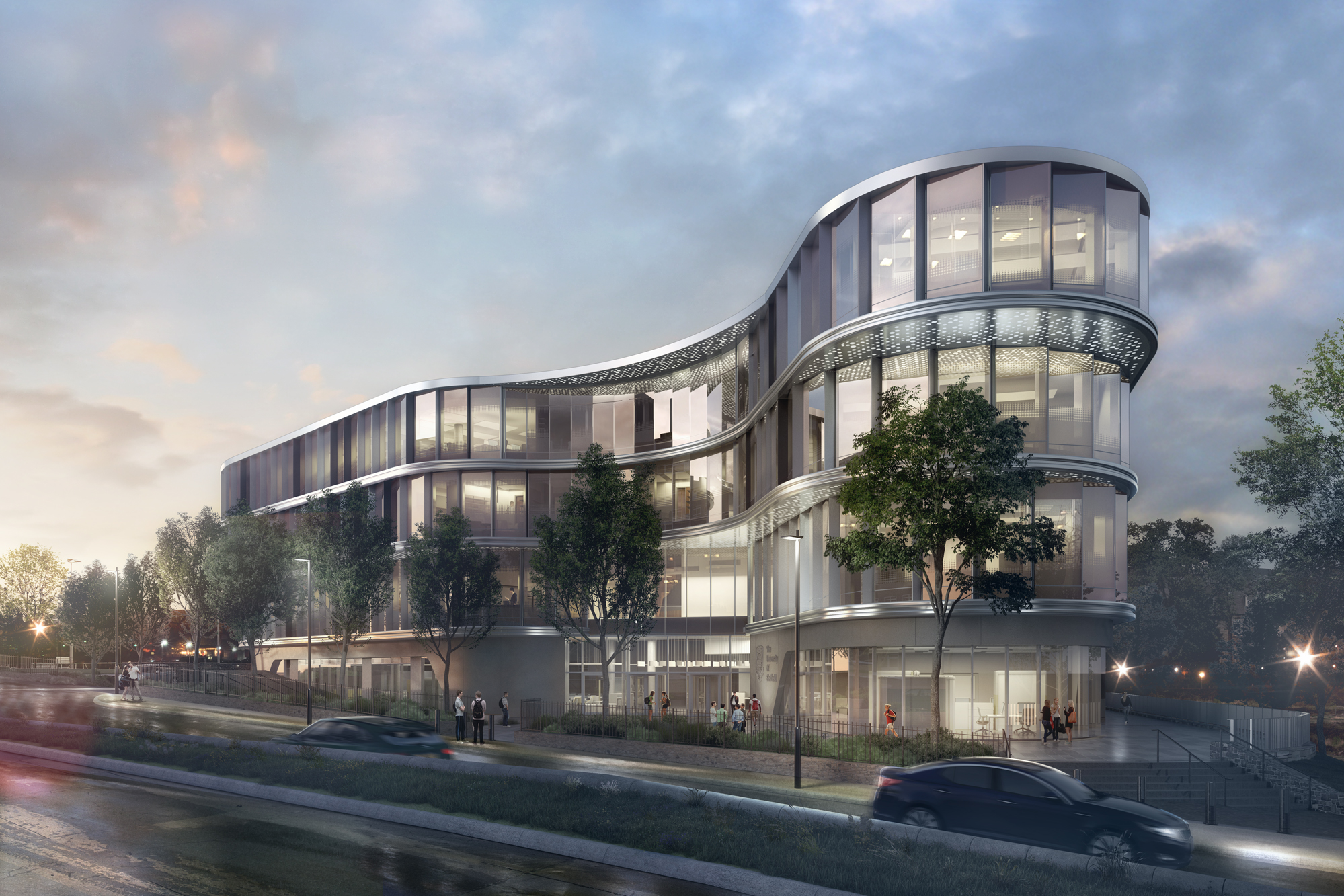Designing a world-class academic hub
The Faculty of Social Sciences is The University of Sheffield’s largest faculty, with almost 11,000 students making up more than one third of its total student population. The university wanted a single building to foster academic excellence and to accommodate the future growth expectations of the faculty. HLM’s remit was to create a building that would enhance the student experience while also boosting the faculty’s reputation for distinction in teaching and research.
The Wave provides a new gateway to the university campus and creates a Social Sciences Hub with improved links to the Sheffield University Management School nearby.
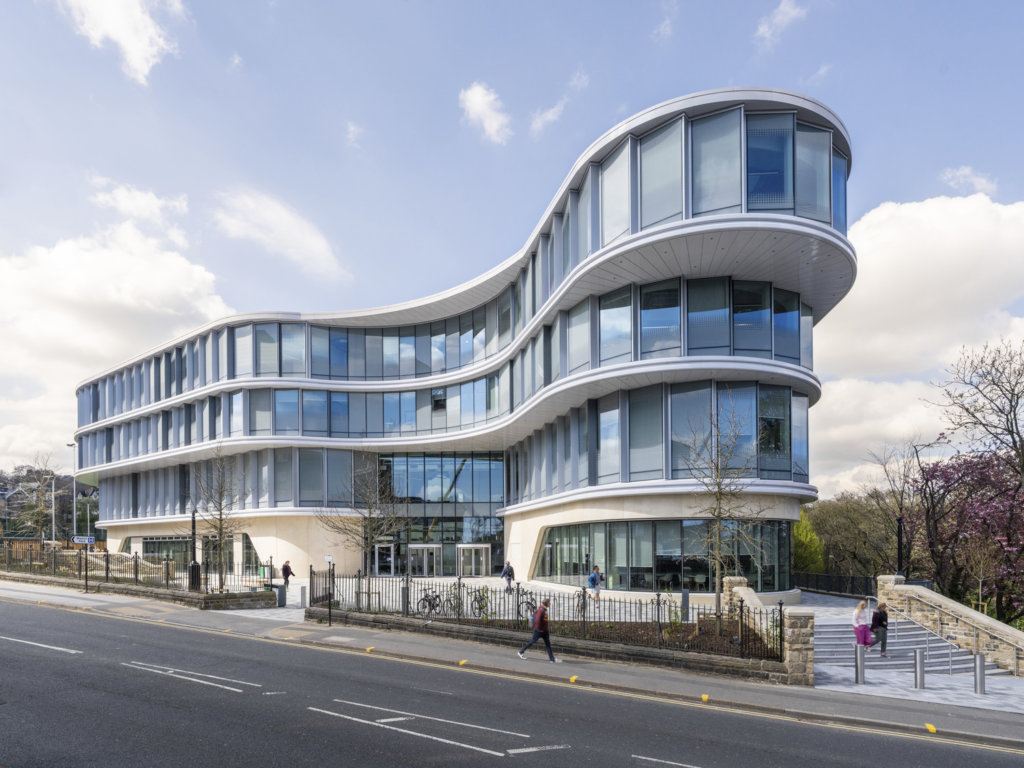

Collaborative design delivers a social heart
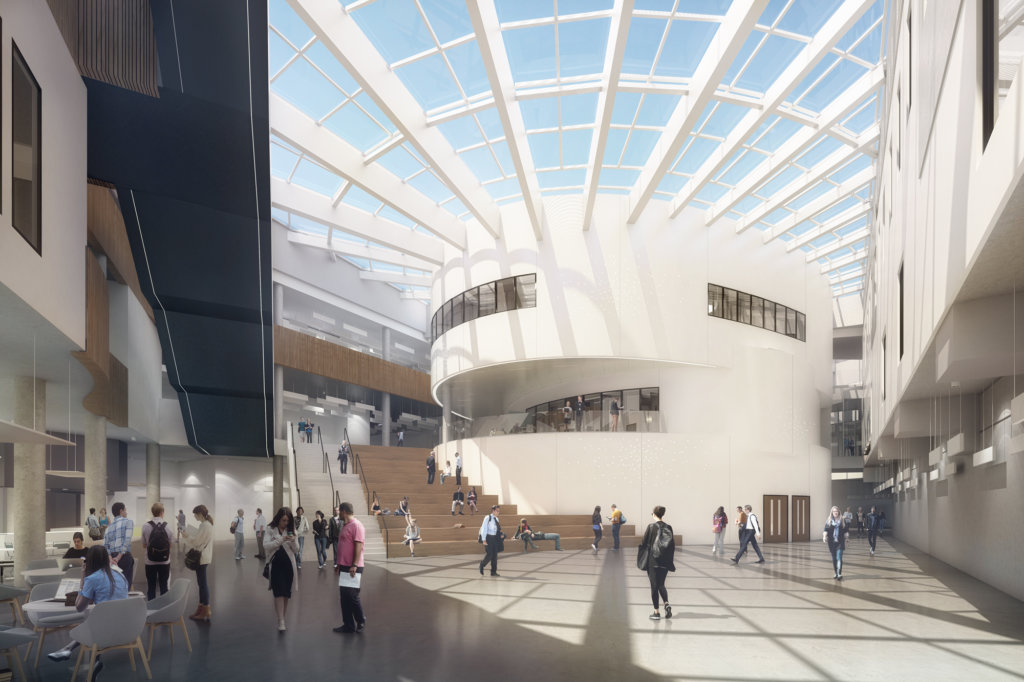
Working with a large team of stakeholders including academics, researchers, teaching staff and student representatives as well as the Estates and Facilities Management team, HLM used Graphisoft’s Archicad software to design a student-centred space for research and teaching. The social heart of the building is the atrium, around which all the teaching and research spaces are arranged. A bespoke glass façade creates a sense of lightness and openness for the building.
To assist the university with planning consultations, HLM produced images of the building from the Archicad model, showcased the designs in 3D using Graphisoft’s BIMx software and also commissioned a fly-through from a specialist CGI firm using Archicad’s model as a base.
A shared space for the local community
Part of the architects’ remit was to create social and green spaces that could also be used by the public. The building is intentionally set back from the street and features a pocket park at its entrance. A large ground floor café is open to the general public and is intended to be a welcoming space for visitors to the cancer hospital opposite.
We worked closely with a broad range of stakeholders, says Karl Brown, project architect at HLM, to design a building that would work for the whole community.
Using BIMx to showcase designs
Throughout the project, HLM regularly exported the design to Graphisoft’s virtual reality software BIMx to help show the university and other stakeholders how the building would look and to offer a sense of its space and proportion.
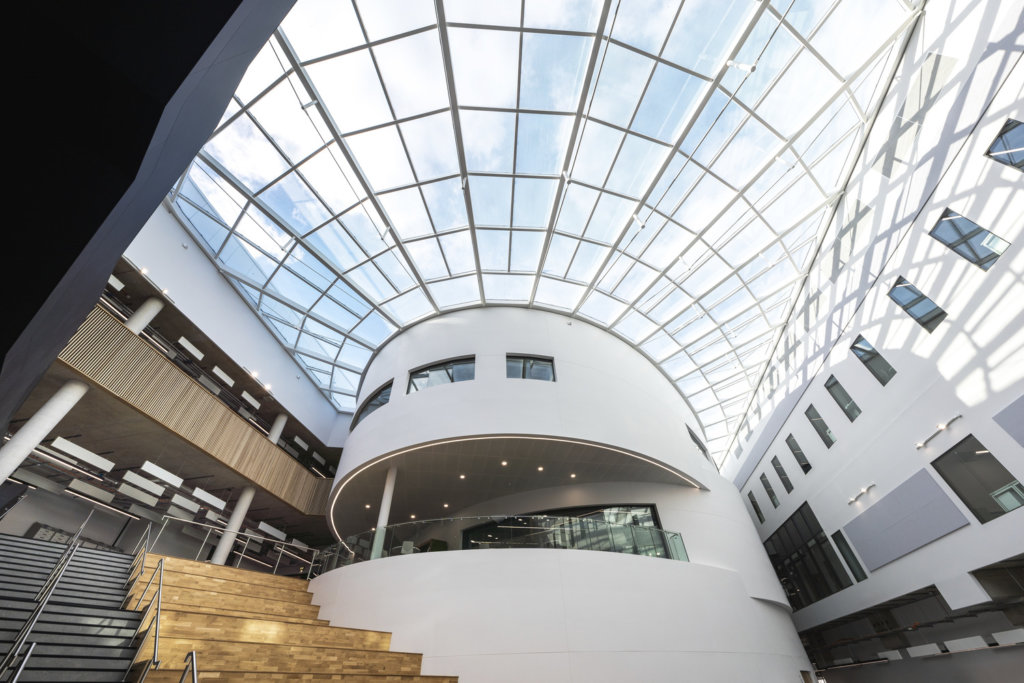
Karl says: Our clients loved BIMx and the ability to be able to virtually ‘walk’ through the building. As architects, we are used to looking at drawings and interpreting them. But for non-architects, BIMx is an incredibly useful tool to show how the building will look.
HLM’s BIM manager Ian Curran agrees, BIMx is a brilliant tool. We used it to share our designs with all the stakeholders in our meetings. For example on this project, we proposed taking 300mm off the floor height. The client wanted to see immediately what the impact would be and with the help of BIMx, we were able to do just that.

A building to foster closer working relationships

The Faculty of Social Sciences is made up of 13 departments offering a broad range of subjects including economics, politics, journalism, photography and architecture. The new building is designed to consolidate those departments which were previously scattered across 16 different sites in Sheffield.
The departments regularly work together on large-scale grant-funded research projects. To create an environment that fosters greater collaboration, the building has been designed around a new multi-disciplinary research hub. This provides a single staffroom and single café for students, teaching and academic staff across all 13 departments. As part of the design, the building also includes a space for professional standard Journalism facilities.

Creating a striking façade in half the time
Key to the building’s appearance is a complex triangular façade which, without Archicad’s automation, would have been very time-consuming to design.
HLM worked with support from Graphisoft UK to create each piece of the façade as a module within Archicad.
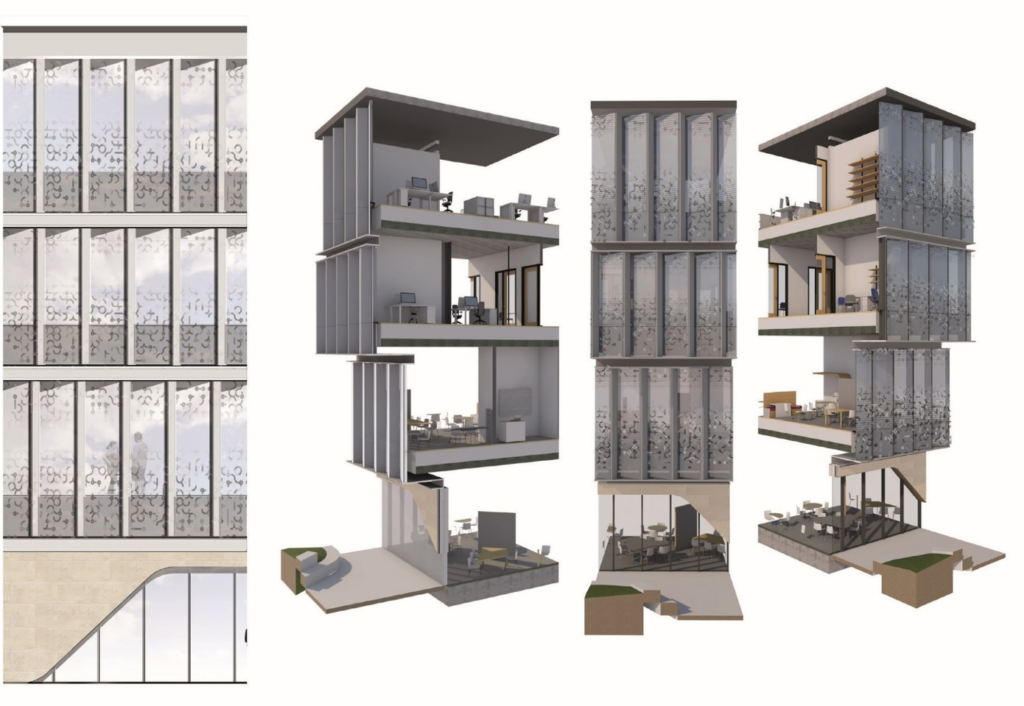
Karl explains, Every piece of information we need is included within the module and this made the process so much easier.
If we needed to do it manually, it would have been almost impossible. But as a workflow, it saved so much time. By creating a module for the repetitive element of the façade we probably cut the time spent on the façade by up to 50%. At the time we were really pushing the frontiers of what Archicad could do.
HLM applied the same principle for the office spaces, creating all the furniture as modules and copying them across for each office.
And for our next project, we now have that learning in place. We’ve established a great repeatable workflow for when we have repetitive elements in a design, says Karl.
Straightforward data exchange via IFC
During the project HLM exchanged information via IFC with a number of different teams and contractors, including the structural engineers, mechanical and electrical engineers, fire engineers, façade engineers, acoustics specialists and thermal modelling specialists.
The interoperability between Archicad and other software in the UK is excellent, says Karl. The structural model was brought into Archicad from Revit via a hotlink, so it was very easy to make changes. Meanwhile, due to its size and complexity, the federated model with all disciplines included was stored in Navisworks.
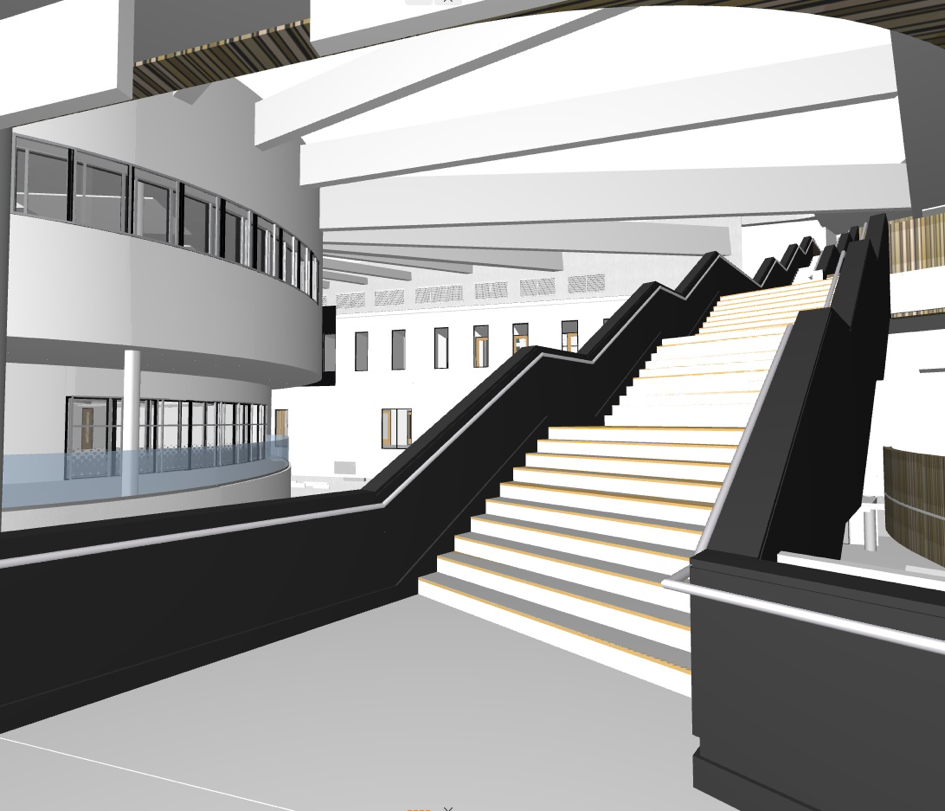
Karl explained that the structural, civil and building services engineers on this project all use Revit but as exchanging information using IFC is so commonplace, bringing IFC models from Revit into Archicad and vice versa is no issue.
Ian continues, Import and export from Archicad via IFC is great – it’s very straightforward. In addition, the hotlink between Archicad and Revit is getting better and better over the years.
However, not all consultants need the same information and data for their own requirements. For this project, the cost consultants Turner and Townsend asked for the IFC model to be exported in a particular way. This was the first time HLM had been asked to do this, so the team changed the settings, used a different plugin and the process worked very smoothly.
Sustainability at its core
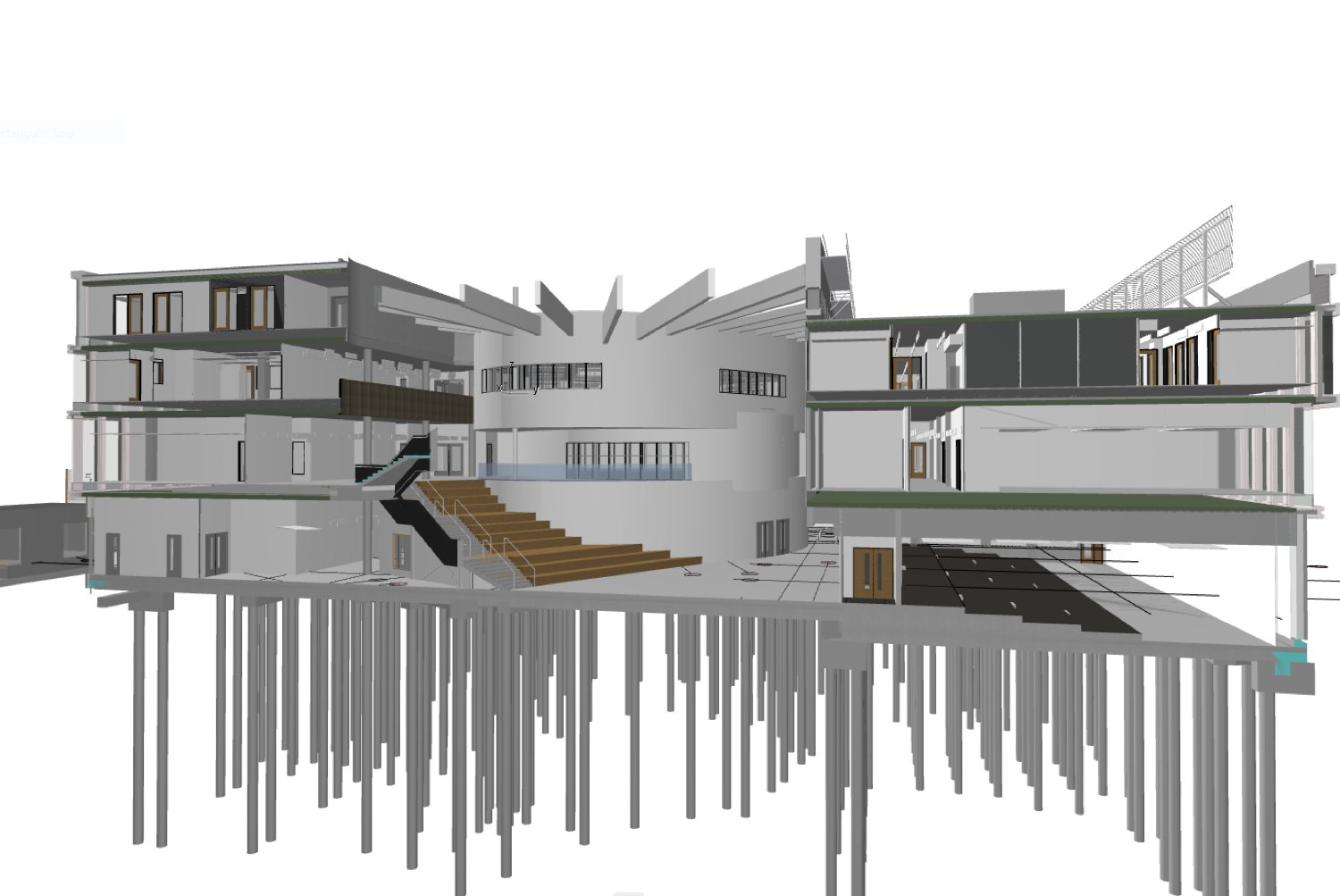
The university has a strong sustainability aspiration and ambitious carbon targets, so another key requirement for the building was that it should be both low energy and low carbon.
HLM worked with its in-house sustainability consultants to achieve a low carbon building. One way the building achieves this is with ground source heat pumps to provide heating in winter and cooling in summer.
The Wave was completed in Spring 2023 and is now ready to welcome staff and students as a collaborative learning space.
